There Is Love In Me Postmortem: Part 1: Dev's Furry Porno Story
「Spending an Inordinate Amount of Time Working on the Intricate Perversions of Science Fiction Sexual Activity!」
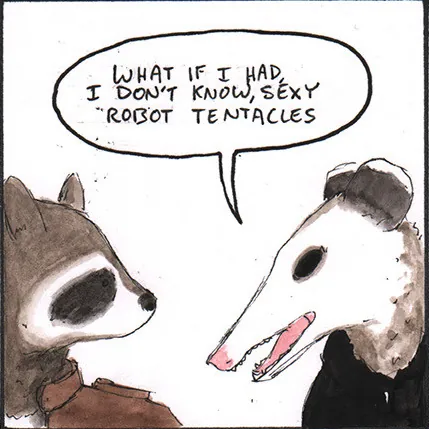
It was a dark and stormy night, and like so many genderqueer bisexuals do, Devin thought about anthropomorphic robots having freaky gay furry fetish sex. From this spark of inspiration came a three-weeks long creative binge that started the first creation of the GAy Robot vidYa Smut mulTiverse U, or "GARY STU" for short. Through that effort, a mighty video game / web novelette / ARG / CTF / text file / Windows broken ZIP support / blatant cop-out thing was created. I could have really used four weeks, but I was busy making this website, and also that juice wasn't potent enough to jumpstart my smut writing. It was the dime bag of juices, you see. That shit is like $2 a gram.
Prelude
In the month of January 2024, Disposable Arts was born. (I could have been looking for gainful employment, but this is funnier.) That enterprise wasn't good enough for me, so I devoted another month, in Feburary 2024, to creating something entirely different: a Web novelette, titled "There Is Love In Me". There is a mighty shill on its itch.io page, but the tl;dr: robot fetish anxiety sex with furries and puzzles. It's an ARG-like thing. It's free. Download it. DOWNLOAD IT YOU COWARD.
I had known weeks in advance that there was a game jam of erotic impulses, titled "Strawberry Jam," which runs through Februrary of each year. It encourages amateur developers to write something new, unconvential, and horny as hell. Many projects I have enjoyed, such as those from the Floraverse canon, have come from this game jam, and I thought it would be a fun challenge that would match my interests nicely. It was fun, and holy fuck it was a challenge, and now I get to write a postmortem about it.
Heed my words, and you, too, can be a niche internet microcelebrity in the world of erotic furry fiction. As you can expect from a postmortem, there will be lots and lots of spoilers, as well as trenchant insights into the human condition through the lens of video game journalism. If you don't want to be spoiled, check out the game here! It's on that link. CLICK THE LINK.
Inspiration

The gist of the thing is this: after coding Disposable Arts and finishing the initial article on February 4, I devoted myself to a few days rest while I figured out what I wanted to do with the game. This stretched out into a week, as it was February 11 by the time I started serious work on the project. I had created my character sheets, a basic plot outline, and a short list of ideas. Every day since then was a cycle of writing, YouTube, and erotic ASMR. It was the best of times.
But let's take it back a bit, because it extends a little past that. I based this foundation on a quick blurb I wrote two weeks earlier, on January 23:
"There Is Love in Me (TILIM). The goal is to find abstract concepts to fetishize, coalescing into a consistent form.
"The goal is to balance different 'humours' (because it's all so fucking funny) by engaging with different kinks. When one humour is overflowed, a carnal desire is triggered, and the sense of self is altered.
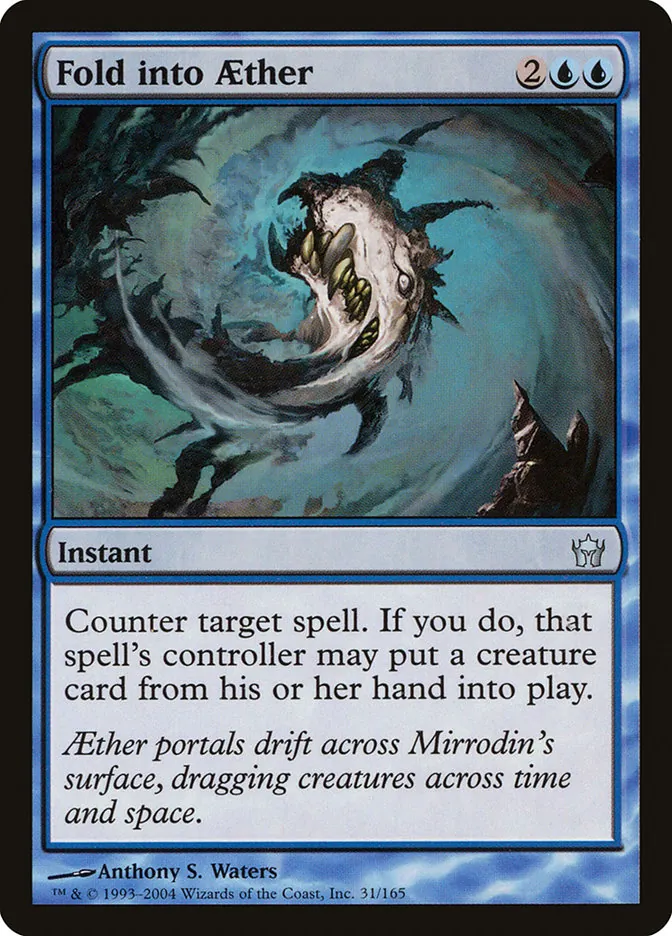
"The game satirizes concepts such as a consistent internal conception of self, stereotypical conceptions of gender, the mainstream conceptions of kink, and repression of one's own sexuality through systemizing it."
So, that's interesting. I already have some high-concept stuff at such a preliminary stage. But where does this come from? You can't pull inspiration out of the aether, no matter how many times you defraud the devil with tulpamancy and McLovin IDs. All creativity is a combination of everything that you have ever been exposed to, even if it's as lame as touching grass or the last warm touch of your waning birthmother. So, we turn to the special reserve of human history's greatest minds: unsupervised access to the internet.
Part of my procrastination on working on the game was not having any concrete ideas. I had speculations as to what I wanted the design to be, including some graphical elements in my head, but that 2% inspiration is worthless in the face of 98% perspiration. So, for me, what's the quickest, easiest way to gain concreteness? A character, of course. And before even defining who that character is, the inspirations start flooding in.
I had spent much of my time discovering the wonders of furry ASMR. I had prior enjoyed roleplay videos in the monster girl genre, but it was only a few months ago I made the leap to VR Chat furries, and humans in, like, suits made of fur. One of my favourite ASMRtists is "Proto Pabz," whose fursona is a Protogen. So, what's a natural species to represent the struggles of systematizing yourself through arbitrary order to rebel against natural chaos? An artificial-organic anthropomorphic furry robot hybrid. Duh!
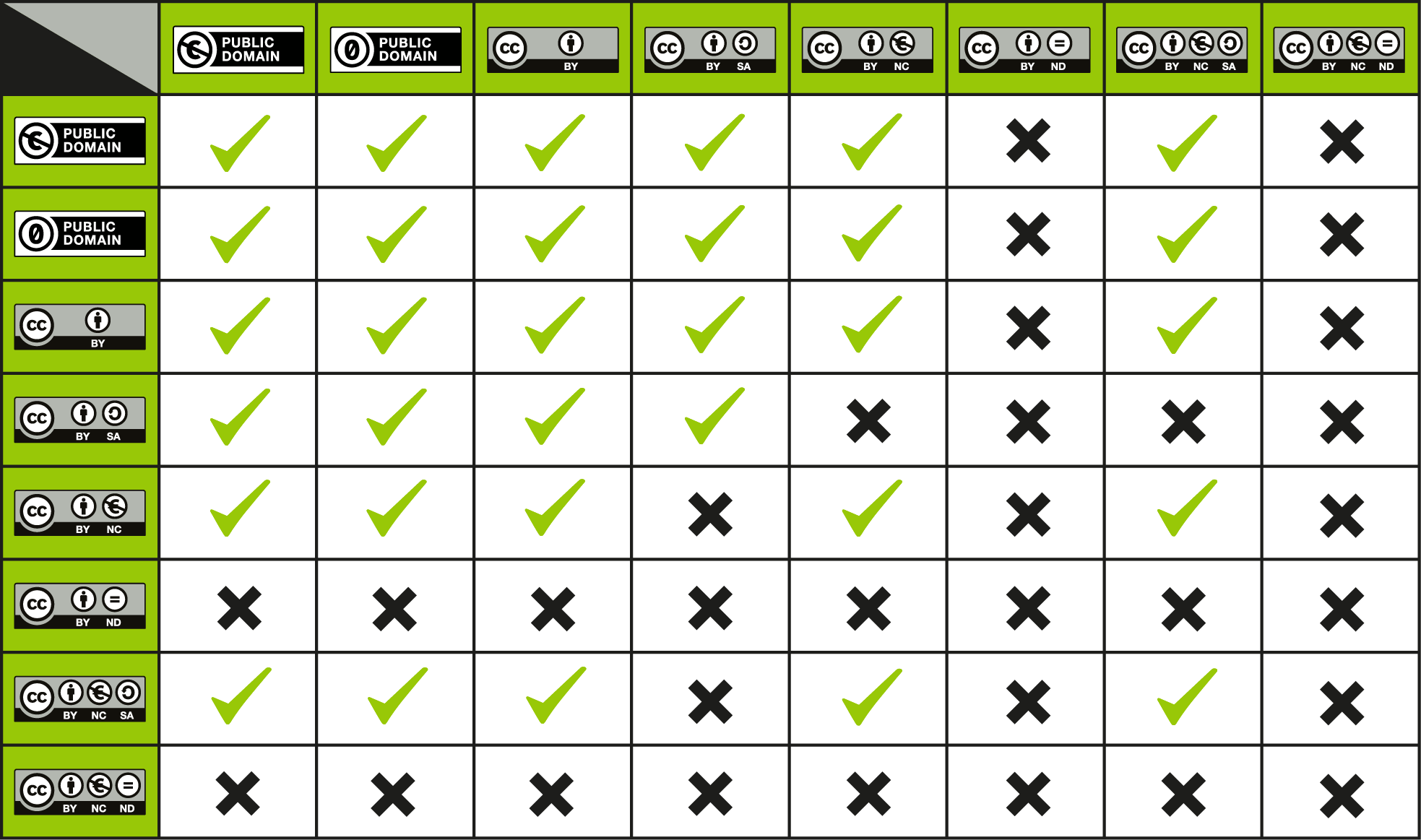
Now, I knew from the outset I couldn't make my characters Protogens. It wasn't my species, no matter how "open" the creator says it is. Even if the name isn't trademarked, and species as a concept are likely uncopyrightable, I didn't want to run the liability of having my characters swooped out under me from an incredibly unlikely, but still plausible series of legal events. And besides, it's more fun to make your own species anyway.
Without a specific grant under a free culture license - one compatible with my preferred license Creative Commons Attribution-ShareAlike 4.0 - claims of being "open" are dubious, and effectively means you're relying on the copyright holder to not be a dick. Legal protip: can an insane rightsholder sue an honest user and not have it thrown out immediately? If "no," don't touch it. Don't rely on a half-baked mixture of mutual lies and misunderstandings to save your ass in court. Use a real license, drafted by real lawyers over decades of revisions, instead of a meme license made up by a random programmer too lazy to read the GPL.
So I instead took inspiration from Protogens. I looked at their canon, looked at their reference sheets and their official docs, looked at common elements in fan-made designs, and took some elements I liked while putting my own spin on things with my personal aesthetic tastes. These are not cookie-cutter designs, lazy exported characters, or "serial numbers filed off." In both my intent and the depictions in the text, they have numerous differences in their anatomy and backstory that differentiates them from their inspiration. If you still think it's wrong to be inspired by your ancestors... hey, that's just culture. Great artists steal.
Setting

What's a natural setting for self-indulgent robotic creatures? Science fiction, of course. My go-to reference for all things sci-fi is Space Station 13 (/tg/station), a game which was a special interest of mine for quite a while. The combination of absurdity in its setting and intricacy in its gameplay fascinates me, especially since it isn't that good as a video game. I treat it more as a roleplay setting that I can pick ideas from during my own work. Whenever I get involved in sci-fi, or anything technologically advanced, I'm sure to steal Honk-pockets from SS13's toolbox.
While the setting is heavily implied to be in the far north taigas on Earth, and therefore not in space, you can still see SS13's influence in my depiction of the game's setting. Things like airlocks, plasteel, even plasma glass make their appearance - along with a vague sensation of improbability in a "New Weird" way. All of these were surely pinched from prior science-fiction works, but congregating them is a skill in itself. Some servers even have Protogens as a playable species, especially those with unnecessarily intricate gameplay mechanics relating to the digestion of live organisms. Sadly, I have not played on them - only the servers where catgirls are kill-on-sight.
It was also convenient that I had viewed a different video from the ASMRtuber "SteinCatboiASMR", titled "Nekonian Scientist Abducts and Studies You". When I had listened to it, I woke up at night thinking about if I really would like to be abducted by a loving and caring, tall and furry cat creature, living in a world alien to my own and where humanity is pitied. That's the type of pleasure I want to instill in my readers, allowing them to fuel their imaginations for the different ways of affection that fictional aliens can enjoy.
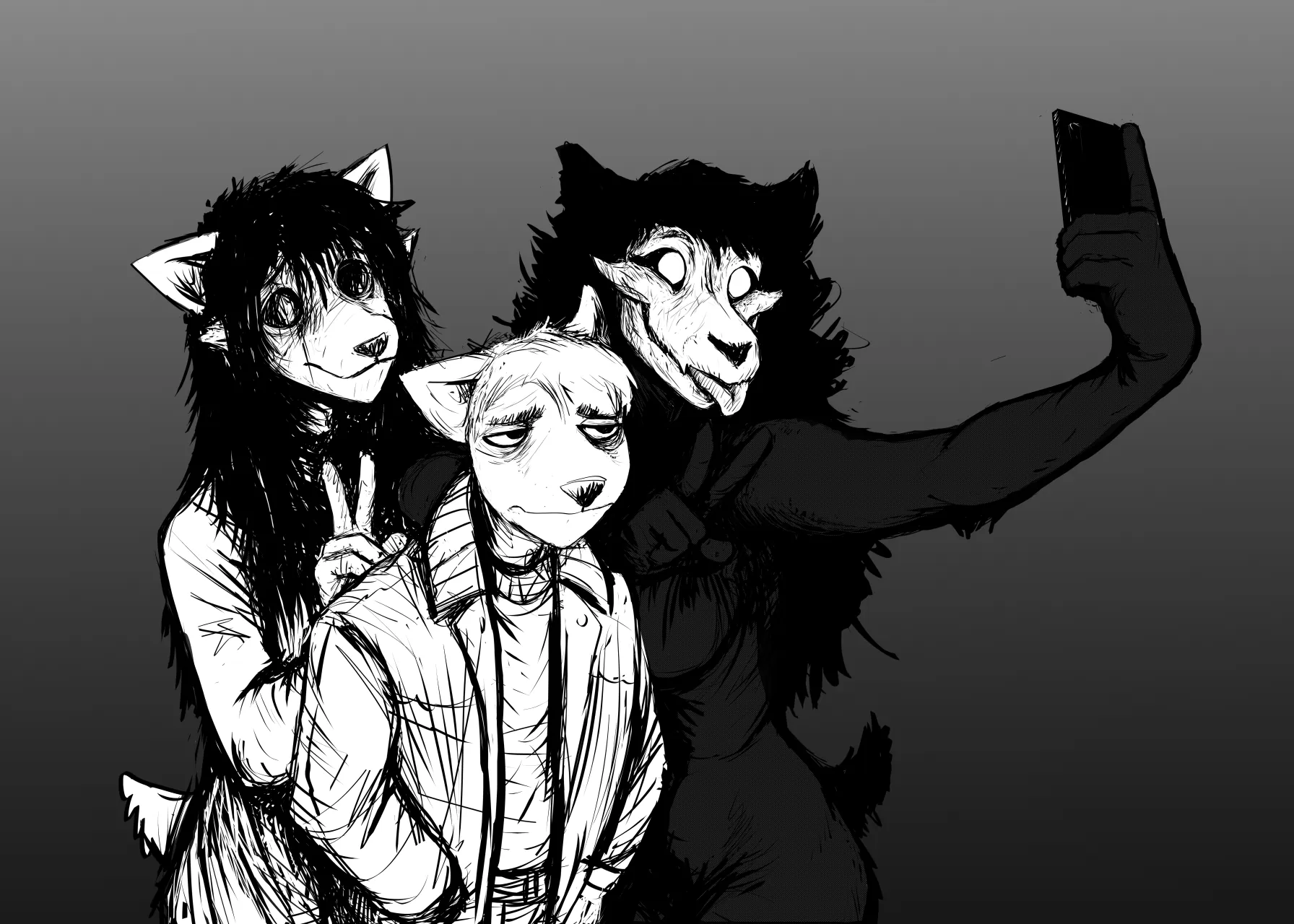
In a similar way, the fictional canon of the SCP Foundation was instrumental to my understanding of the New Weird style - a shared universe of anomalies, technological absurdity, improbable coincidences, fractal mythologies, and the deepest horrors that a dry-witted, bureaucratic hellhole is forced to come to terms with. All the better for two reasons: one, it's free culture, and is licensed under CC BY-SA 3.0. Two, the catchphrase of the project is "there is no canon." Not literally, of course. There are universal elements of the canon, but it's less religious zealotry and more so adapatable mythology. You get to pick and choose, and if your interpretation contradicts someone else's, they'll just have to learn to share their toys.
You may think I'm a huge worldbuilding sort of gamer, and in a sense I am, but only to the point of serving the story. When you build elements of a world that are not part of a story, you are - by definition - spending time, energy, and effort onto things that your audience doesn't read. This is a very "programmer" way of looking at things. To quote a master of the ancient scrolls, living in the dark ages of 2007: "START WITH BREVITY. Increase the other dimensions AS REQUIRED BY TESTING."
But it's true, isn't it? We all know the stereotype of the writer spending a hundred hours on their magic system, and zero hours on their narrative. It's a sucker's game to create a fictional universe when you can't even get a short story out the door. I don't write out maps, or species, or systems, or whatever - it's all in my head, doing zero-time processing in my brain while I'm hornyposting under egirl selfies.
Your background is called background for a reason. Yes, it informs your story. It provides many opportunies to drop hints about the setting's true nature, with sentences like "the door dilated open." Unless you're goddamn Tolkien, you can have a story without a setting, but you cannot have a setting without a story. Only write out the background to the degree you need to be comfortable with the story. And don't be afraid to wing it. In the long run, it doesn't matter. Really.
Getting shit done
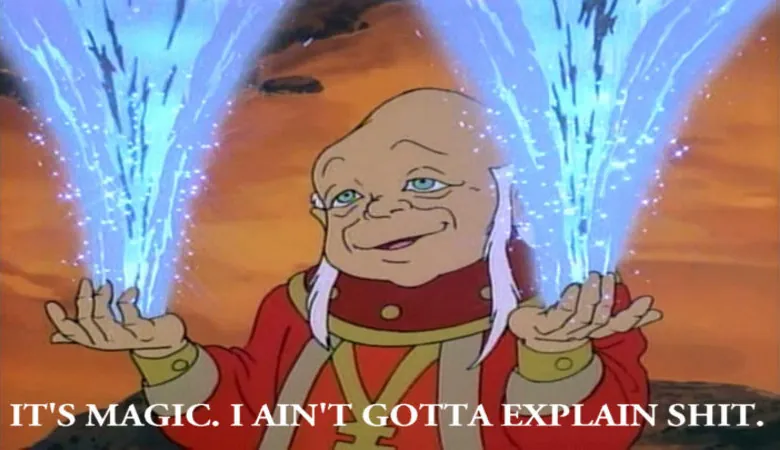
I start all my projects with a mandate: all complex things come from simple elements. When simple elements are combined, they create irreducible complexity. Hydrogen + time = all of existence. Same for the arts. Your inspiration is hydrogen, and given enough time, you can make anything. So, I had formed my idea on this fundamental basis: explore many fetishes, connect them through a narrative, have themes of rejection of said fetishes, and have the protagonist become uncomfortable with the systems of their own creation. Super simple stuff.
Now, let's get some things out of the way. I never had a functioning initial game design beyond "numbers go into meters." That is a design that is extremely easy to create unsolvably complex scenarios with, and trying to work out those scenarios on a time crunch was way out of my league. I eventually cut it out and decided to focus 100% on the narrative initially, because I knew that was my proficiency. So things that did make it in, such as abstract fetishization and my basic plot beats, were all worked on before any notion of game design. The game portion itself was, literally, created within three days. And those were some long days.
The single most important aspect of a game jam is playing your position. This means doing what you are good at, and banging on that thing forever and ever until the deadline comes up. Nothing else matters. Knowing how much you are realistically able to accomplish in a given period of time, even when accounting for extra time given, is the greatest skill you can have. They call this Parkinson's Law: "work expands to fill the time available for its completion, even when taking into account Parkinson's Law." So, you have to cut, early and often, even when it goes against your pet features. A great developer is a great butcher. You can call it a "cop-out," but I call it "shipping."
When you play your position, and execute your competencies, the things you're less competent at either fall into position, or are cast away. In this way, you turn weakness into strength. Can't make sound? Make a text-based game. Can't make pictures? Use ASCII art. Can't learn a new engine in time? Make a game without an engine. Can't get your game on cell phones? Make a PDF version. Windows has a hidden 260 file path character limit for some godforsaken reason? Re-engineer your entire game flow to fix Microsoft's mistakes. No, I'm not salty. https://linuxmint.com/. Hey, how'd that get there?

Derek Yu, indie games darling, has a great article called "INDIE GAME DEV: DEATH LOOPS". This article details "traps that many indie game developers fall into that either prevent them from finishing their projects or extend the length of the development to a point where there is tremendous pressure for the game to succeed." His most important advice can be condensed into two points: Scope tiny, and stop polishing. As he says in the article, "a work of art is never finished, only abandoned." Or, to put it in Zero Punctuation terms: "One shitty released game is worth more than an infinite number of unreleased career-defining masterpieces."
And, look, I have generalized anxiety disoder. If you don't know what it's like, imagine being jumpscared by FNAF Freddy, but all the time. You get to a point where there's a persistent dread in everything you do, and it's essentially impossible to get things done unless you're delusional enough to feel good about yourself. It is physically and mentally destructive to constantly be in a state of fight-or-flight based on your own internal perceptions, especially in regards to the opinions of others. When it comes to "one shitty released game," the thought of being looked down upon is so harrowing, that quite frankly, one would rather die than be subjected to the eyes of others.
Devin's epic productivity secret? Get a fluoxetine prescription.
Character
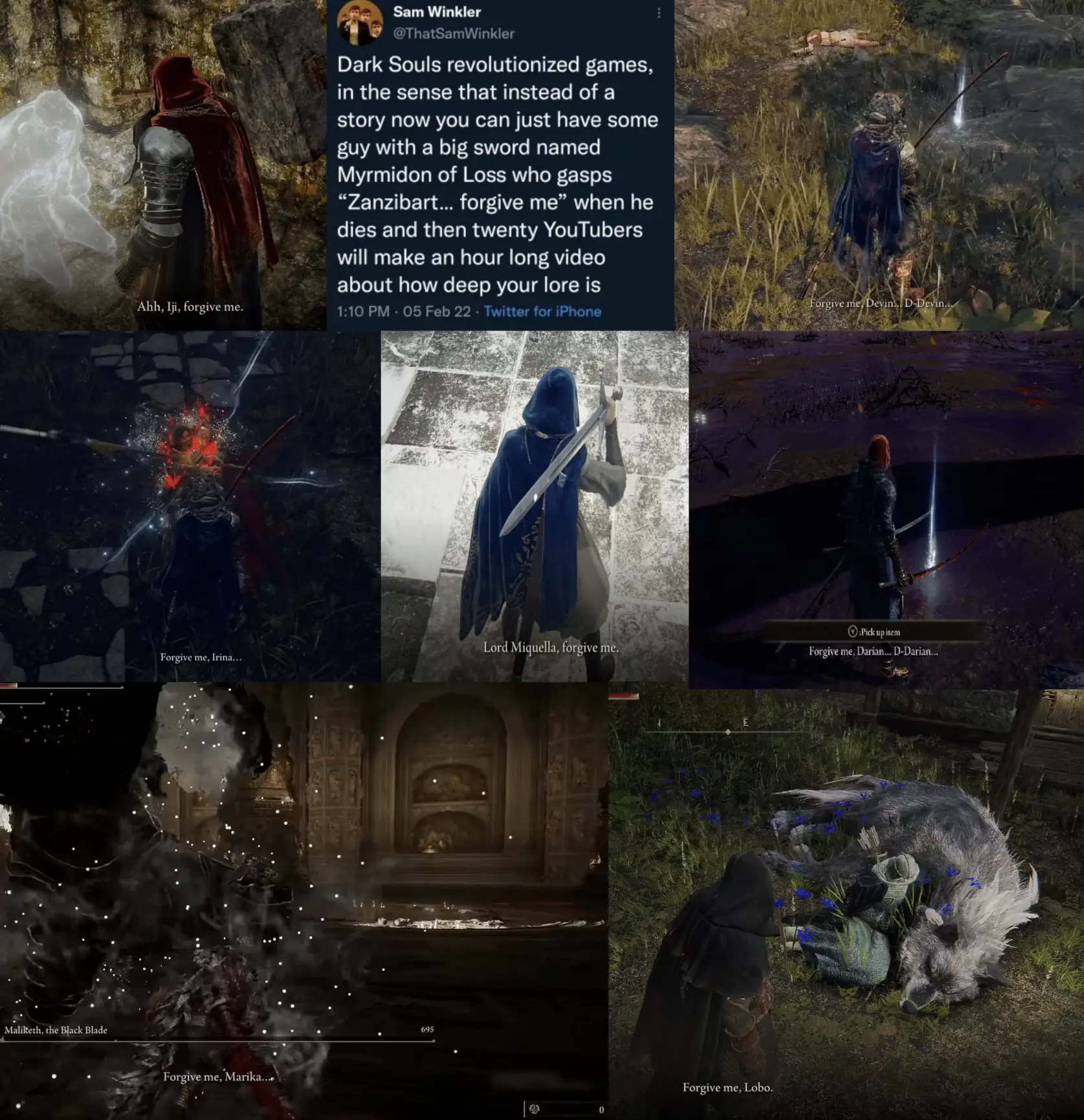
Through the inner mechanisms of my mind, and my drug dependency, I had machinated a vague idea of my setting and workflow. But how do we go from idle ideas into actual creation? In keeping with my "simple to complex" mandate, I have to construct the essential elements of a story. And what can be more essential than a character? My inability to make a narrative design during my week's vacation was due to me not having any defined characters. Having realized this, I set to work on creating them.
How do you make a character? Sometimes writers talk about characters in analytical terms, defining them as archetypes, character roles, and story functions. And, sure, all these are fine - it's hard to get anywhere without knowing what a "protagonist" is. But, let's be real, writers can just come up with characters like magic. They spawn from the ether, and with a little bit of focus, they are chanelled through to the written word. Yeah, they're basically the net sum of all your unspoken cultural influences to date, but you don't care about that. They're just little guys in your head. And if you don't have a harem of original characters, how can you call yourself a writer?
Of course, a creation inside your head has to get out of your head. Tulpamancy is no good if you can't shitpost as your Pinkie Pie headmate. That's where character sheets come into play. Now, as for the typical character exercises that (shudders) writing courses give you, they focus so much on irrelevant details and asinine bullshit that it is insulting to the art of writing. If I see one more question asking me about my character's socks, I will McFreakin' lose it. This is disingenuous procrastination, damaging amateur writers by convincing them that anyone cares about this shit.
But there is a way to get the good of these types of questions without the bullshit. I'm not going to pretend I invented the greatest gift to literature since the CIA's cocaine racket, but here's what works for me: write out a single page of character traits, essential information, and some arbitrary stats, and then use that as a basis to let the character guide itself using your own imagination. Sound familiar? The D&D nerds are getting out their dice, the Pathfinder nerds are filling out their pips, and the Warhammer nerds are bringing out their wallets.

Similar to a role-playing game, the purpose isn't to be the hard determinant of everything your character is capable of doing. It's the stepping stone that you can use to propel them throughout their exploits. It is, fundamentally, just an outline of what your characters start out as at the start of the story. You don't know what a character is until you bring them to the story you're telling. And that's your purpose as a writer. Playact as your characters, and use them to tell a story that makes the audience want to fuck them.
Sometimes writers (real ones, who get paid for their work) will say something to the effect of, "oh I just write scenarios and put the characters in it and they basically act for themselves!" As patronizing as this is, they have a point. If you have a good enough foundation to work off, you really do not need to think about your characters at all. You set yourself up in a position where your brain doesn't have to manually recreate the entirety of your character personalities. Write down the essentials, keep them in the back of their head, and let your instincts get to work.
Would your character do X? Look at the sheet. Would they not do X? Look at the sheet. Does this conflict with their stated values? Look at the sheet. Would they use that type of vocabulary? Look at the sheet. Do they have an unusual competency? Look at the sheet. And did they do something crazy, yet thematically fitting, to the point of making your story - against all odds - interesting? Then ignore the sheet. The goal isn't a slavish devotion to internal consistency. The goal is to make cool characters! And wouldn't you believe it, the more contradictory the character, the more real they seem, and the more you grow attached to them.
As for the physical attributes, describing visuals using the written word is an act of thaumathurgy: you don't know why it works, but it just does. Writing is the most brilliant medium because we are doing the impossible. We are converting textual information into visual information through the brain's interpretation of all the physical and conceptual experiences the reader has ever experienced throughout their entire life. When you become a visual artist, you learn to represent reality. When you become a writer, you abuse reality. You weaponize it. You're not making a world from scratch. You're taking the current world, and bending it to your will.
But there are limits to character description. A picture is worth 1,000 words. You ever try to describe the totality of a picture with that type of budget? You could write a novel on a neckbeard nest and still have room for the suspiciously shaped stains. So don't sweat this too much - we all invent our own depictions, inside our imaginations. As Stephen "Cum God" King said in his book on writing, "On Writing": "What am I going to say, 'on the table is a cage three feet, six inches in length, two feet in width, and fourteen inches high'? That's not prose, that's an instruction manual. [...] We all understand the cage is a see-through medium; beyond that, we don't care."
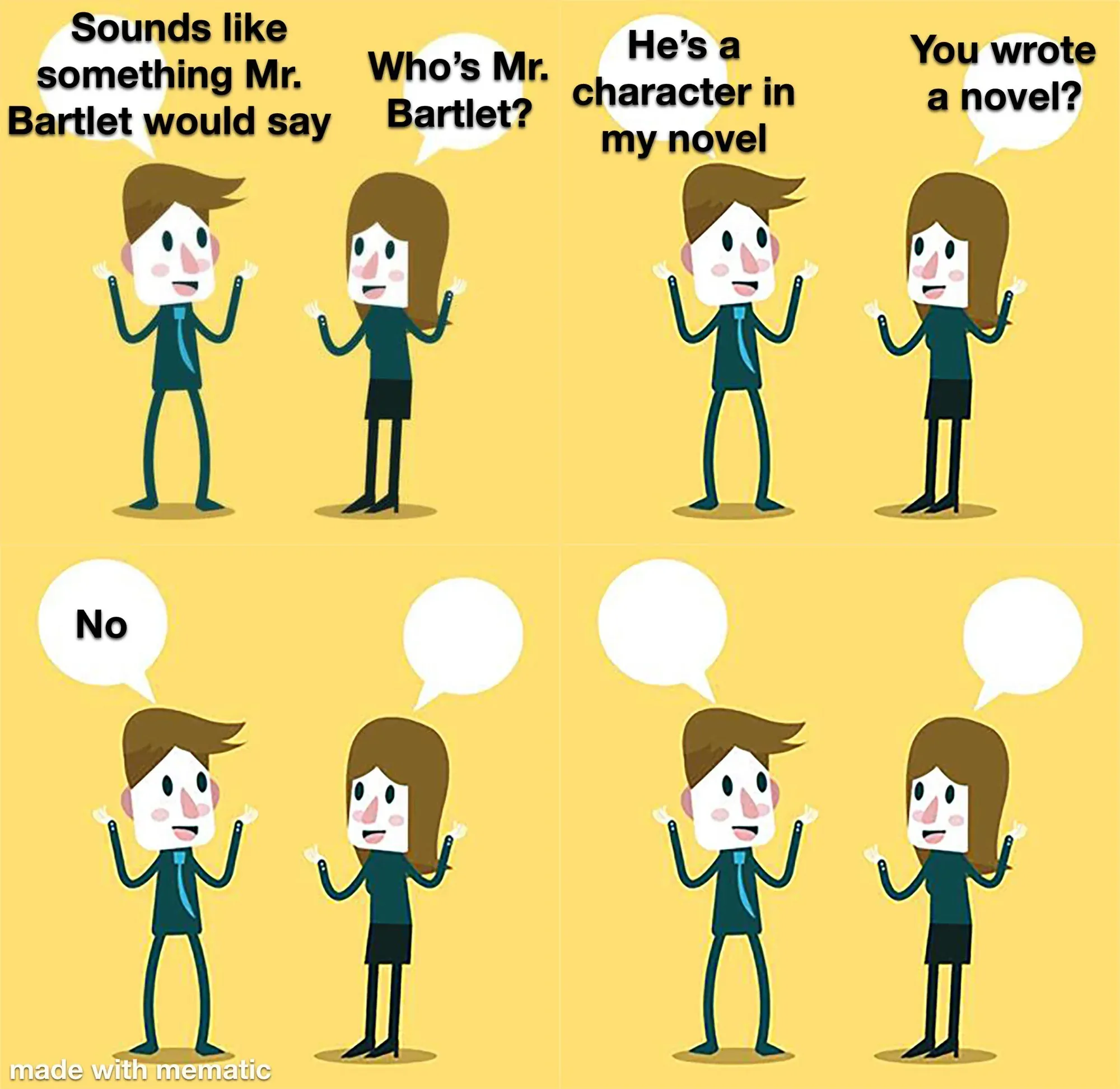
That's why the physical descriptions of my characters are less than a sentence long in the sheet. They are expanded upon in the novel, about a paragraph each. It's necessary to describe what the characters look like at the outset. Fiction is a movie inside your head, and having a solid character description makes that feeling all the more real. But, again, it's not an instruction manual. You don't need to be precise. You need to tickle the imagination. Everything else is bonus.
This also extends to the Name Brand Protogen thing. The fictional species inside There Is Love In Me are called "Taigasaurs." While this is deliberately not elucidated inside the novelette, to avoid infodumping the viewer with the implications of that name, it is described inside the puzzles. The abbreviation "'saur," is used only once, as an implicative lore treat. Spreading out tiny details like this across your story, instead of blasting them with exposition immediately, makes the world feel so much more lived-in. Seriously, have you ever had to explain to a human what a "human" was? Would fictional species do the same?
The name "Taigasaur" is deliberately a misnomer - in my view, the species are bipedial canids. The name comes from their exaggerated claws and digitigrade legs, which are swiftly chopped off in favour of plasteel limbs. Like Protogens, they are artificially generated. They have similar aesthetics - body lighting, visors, armour plates, artificial limbs, and pictoral "Qt marks." Thanks to the limited informational capacity of prose, the reader can enjoy these elements in radically different ways from each other. If you want to imagine them as Protogens, go ahead. Nobody owns the concept of android furries.
I interpret Protogens as being furries with robot parts, while Taigasaurs are robots with furry parts. Protogens are cute, cuddly, and modern, designed to be loved. Meanwhile, Taigasaurs are rougher and more visibly worn down, making use of any technology available to augment their bodies, and deeply insecure about physical affection. The lore is also different, heavily implied to be in a post-war civilization caused by a different fictional species, set Twenty Minutes into the Future with worldwide geopolitical changes. Protogen lore leans heavily into fantastical science fiction, while my lore is more grounded in reality - which is to say, idealistic vs. cynical.
What, you mean these weren't explained in the story? That's the beauty of it. The author isn't a tour guide, pointing out tacky attractions and the mansions of the peers they're ripping off. The author is a sherpa, wandering through their native habitat as you follow in quiet, telling you what needs to be said, and no more. The reader should never be a tourist, demanding stimulation at every corner. The reader is a traveler. The author is guiding you insofar as is necessary. The reader engages as much or as little as they like. The author lives here, while you're just visiting.
Narrative

I always set my stories up in a structured fashion. Set up some scaffolding, write out some plot beats, and fill in the blanks with lots and lots of words. I can wing it, of course, throwing out prose in "just-in-time" fashion instead of relying on a predetermined compilation. But it's much easier for me to be able to look at a plan rather than continually recreating one on-the-fly. Otherwise, I would have both the plan and the prose occupying the same headspace. That's not good for my creative process, or my efficiency. If there's a certain input that stops you from doing your work, you have to sever it from your brain. Putting down all those nagging thoughts into a seperate document is an excellent way of doing that.
It's also convenient because the scaffolding means you can easily expand upon your story in a sensible, structured manner. You know how every bad young adult novel divides their characters into "houses," "tribes," or some other effectively caste-based fascist system based on inherent attributes and not intrinsic worth? If you want another tribe, just define some traits and throw it in. If you want another subplot, just expand based on the lore you already made. It's the geometry of storytelling. You create symmetrical outlines, and when you need to expand, you simply copy the shapes.
The scaffolding I did for There Is Love In Me is delightfully simple. Aleph is sexually insecure, and is going to explore fetishes. They do this through systematizing their experiences in a pseudoscientific way, with document logs lifted from the SCP Foundation's style. If I want a new chapter, just write out a new fetish, a new log, and a new sexy scene. Doing this allows the reader to easily parse the structure of the story while devoting the rest of their mental energy to appreciating the overarching narrative. The bones of the structure supports the muscle of the story, attached through prosaic flesh.
But that's just connective tissue. How do you ensure that there is, overall, a story to tell? To be honest, this is a clusterfuck. You're not writing a story so much as you're manipulating it. Like the chemical abberration that is Nickelodeon Gak, nobody knows how it works. They simply squish it, manipulate it, and try to wield it, knowing that they can only control it to the degree that it follows its own whims. And then you can be absorbed into its loving gak goop, feeling bliss as you sink deeper and deeper into its warm and loving glue, having it go all across your body and deep inside - okay, moving on.
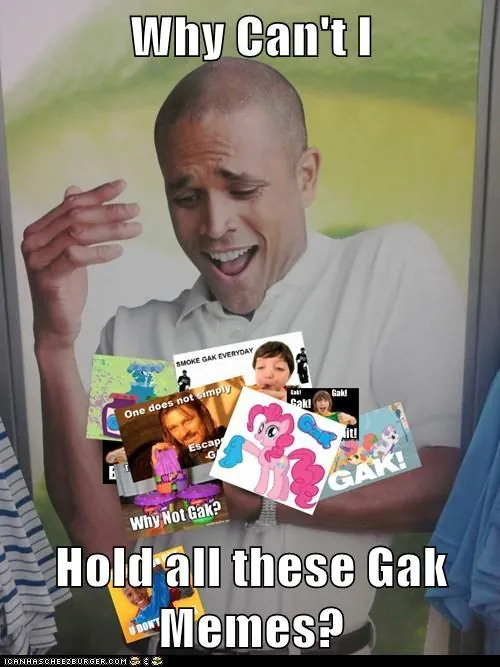
Because of this clusterfuck nature, the core narrative is the part of the story I'm most disappointed in. What happens in the novel is this: Aleph paces around their room, fails to have sex with Nepenthe, fails to have sex with Nepenthe again, has a chapter that is redacted, and then calls women cunts in a shopping mall. And Titanic was just some dead guys on a boat.
To quote Roger Ebert, "it's not what a movie is about, it's how it is about it." It's a bit like The Stranger, or Steppenwolf. Nothing really happens in those books; it's just old guys whining. But the qualities of their other attributes - their themes, their prose, the exploration into an aspect of the human condition which is always known yet never said - make them absolutely brilliant. There is more to fiction than just the story, and appreciating these differing textual elements distinguishes the casual reader from the esteemed critic. Yes, I am comparing my furry smut to the greatest works of modern literature. What are you gonna do about it?
The problem with writing narrative is that you don't know where it's going to end up until it's done. And then you have to go back and rewrite the thing, which starts the cycle anew. This is a massive waste of resources - resources which I could be using to create new stories, as opposed to using my limited life force to obsess over a single one. I choose to break the cycle, and write in "runahead" mode as much as I can. I try to keep in mind future narrative based on past structures, but if I don't, I can just go back and fix the broken stuff.
You can create elaborate plans and throw sticky notes on your monitor and create a pegboard with strings mapping out all your O(n!) time character relationships, like a lazy propmaster's depiction of schizophrenia. You can download a super special proprietary mind mapper / notes app / doomed replacement for Microsoft Word that will make you the bestest writer in the whole wide world, like all the writing advice bloggers who are curiously unemployed. You can even open up Notepad and write, if you want. But when you're deep in the shit, you just have to wade through your words and raw dog the story blind. Or, in shorter words: "Fuck it, we ball."
I hate the draft-based approach to writing. There is nothing so deletrious to the creative spirit than writing the same damn words over and over again, with only slightly different beats. Universally, the first draft is imperfect. It is messy and slimy and a little bit smelly, but, by god, it is human. That's why I never write more than one draft of my works. I can edit it a bit, put some stank on it, and obsess over increasingly nerdy typographical considerations. But I don't recreate it. I don't destroy the soul.
Coming from a programmer's mindset, it is absolutely batshit insane to rewrite functional prose, throwing out 100% of your work, all for the sake of vanishingly small gains in quality that is less honest and authentic than your original creation. I cannot believe that the culture of writing is such that you are continually nuking your progress for the sake of some arbitrary, unmaintainable expectation of quality. All it does is embolden the gatekeepers of publishing, with feudal editors, brunchlord agents, and parasitic marketers, sucking away the last dying breaths of the artist's rebellion against abnormal normality.

How do you construct a good narrative? A bit of planning and a fine-toothed comb. How do you write a good narrative? I don't know. If you figure it out, you can teach me as well.
Themes
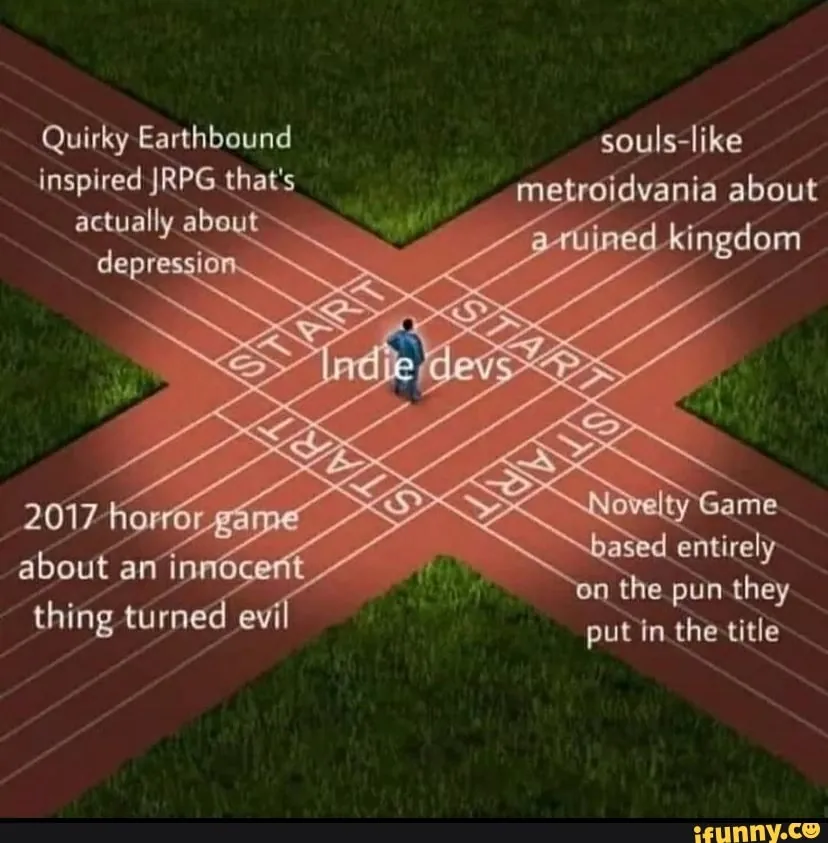
If the story is the stuff that happens, and the characters are what make them happen, then the themes explain why you're making it happen at all. Broadly speaking, fictional works are about something, whether they realize it or not. They have something to say, and if they're not making it explicit, people will interpret a message regardless. Most everyone has opinions, and if you don't express them in a work, your readers will express them for you. Death of the author? Fuck that shit. I'm alive, motherfucker! You WILL be indoctrinated.
The old joke goes that every war is about a woman, and every story is about that one Jewish girl in high school that you had a crush on and read Homestuck to relate to but were too autistic to get that bag and ended up getting ghosted for three years until an awkward reunion at graduation and then subsequent anxious dreams about what could have been. Neither of these statements are literal, but they express what people value and are willing to devote substantial portions of their life to expressing the beauty of - namely Stucky pussy.
Much of the motivation for being a writer is pettiness. You have shit to say, and the world will hear it. Now, the difference between the great works of literature and a Substack with two subscribers is how you go about it. Writing incel rants won't bring those Nepeta cosplay sock pics back, unless you're J. D. Salinger. If your intent is to go full Author on Board and right the great wrongs in life, maybe just make a Twitter thread? The audience, by and large, isn't interested in that time on Tumblr where you were talking with a cutie in the ask box and then you brought up your Dota 2 sideblog and suggested she was a fake gamer girl god fucking damn it I miss her so goddamn much I just want to GO BACK
Broadly speaking, the themes in There Is Love In Me are about sexual repression, the beauty in friendship, the power of empathy and consent, and finding the good in people even through their thorny exteriors - and also anxiety and autism. This is represented through Aleph being the well-intentioned shut-in, and Nepenthe being the failgirl extrovert, joined through plausible implications leading to a long-lasting and deeply trusting friendship.
They all have problems, and they deal with them in different ways. The big issue with them is not that they have the problems. They care about each other too much to emburden the other with their mental garbage. They sincerely love each other, in lots of different ways, but they don't have that love for themselves. And that's the bitch of the thing. You can solve your problems alone, but why would you want to?

These are not stupid power fantasies for lame animes and desperate fanfictions. They represent the real. And if a story isn't inspired by real people, the real world, and real experiences, then all they're ever going to be are power fantasies. Surely you know of all the terrible stereotypes for each gender, both negative and positive. Women are Madonna-whores, men are Oedipus-incels, and trans people are hypersexed deviants. These dehumanizing archetypes are the product of arrested development. No whole person would create them. They are evil because they lie.
I had received some comments about the story saying they understood these messages well, and I really do appreciate people enjoying the work for representing their own circumstances. Roger Ebert always interpreted the movies as an empathy machine, and I completely agree with that. One sarcastic screenwriting adage says, "if you want to send a message, use Western Union." But that's only true when the message comes at the expense of the work. Themes are what makes us feel love for the work, and reminds us why we're in this dirty game at all - because there is love in us, and there is love in you.
Great works of art don't need to numb the senses. They need to bring them forth in their totality to have the audience appreciate feelings that they didn't know was within them. And in the case where the reader knows well those feelings, to have them represented in the truest fashion, so that they can feel that love for a stranger, separated through time and space, connected through prose, knowing that there's someone out there just like you.
That's the power of theme. Every narrative has already been written, but every life has yet to be lived. Bringing forth those experiences, and creating new experiences based on what you're already been through, allows you to make each story honest and true. A mindless blockbuster is entertaining in the moment, and technical masterpieces have an aesthetic joy to them. But it will never be as fulfilling as an author having a one-on-one chat with you, saying that things are going to be alright, after all. And if the author is telling the truth, saying that things won't be alright... at least it'll be a hell of a story.
Prose

Yeah, yeah, yeah. 6,000 words of that crap is all well and good, but you can't just write it all out without putting some Bobby Sauce on that bitch. This isn't a Wikipedia article. Remember the Roger Ebert quote about movies being about how they are about it and not what the things they are about, are about? The same as the camera can use all sorts of visual tricks to make your monkey brain interested in a terrible story, the written word can do the same, except not really visual, apart from the "reading with your eyes," thing.
Prose is the great equalizer. More so than any other structure of your work, the prose is the audience's immediate point of attachment. You can tell if someone is a good writer in three and a half sentences, and if those sentences are on the first page, then the judgement is all the more justified. It's the calling card for the rest of the story. Establishing character and setting and it being a dark and stormy night, all of that is for amateurs. The reader wants style. And having a style that's full of life and bombast, a calling card for the whirlwind adventures that await, is more than just spectacle. It is a guarantee: that the author knows what they're doing. Put your trust in them, and you will not be betrayed.
Prose is a love language. It cannot be taught, nor translated. It is the combinatoric sum of all words ever read, ever heard, shoved into a text file a few bytes at a time. It's more than just "finding your voice," "being yourself," and other inane maxims. It's about the pace, the rhythm, the rhyme, the meter, the intonation and emphasis of the words you place in that particular order you place them in. It's the right words written and the wrong words murdered, the lexicon of a life long lived, songs of experience sung bare for the listening pleasure of the enraptured reader. But there are some tricks of the trade, so maybe I should say them...
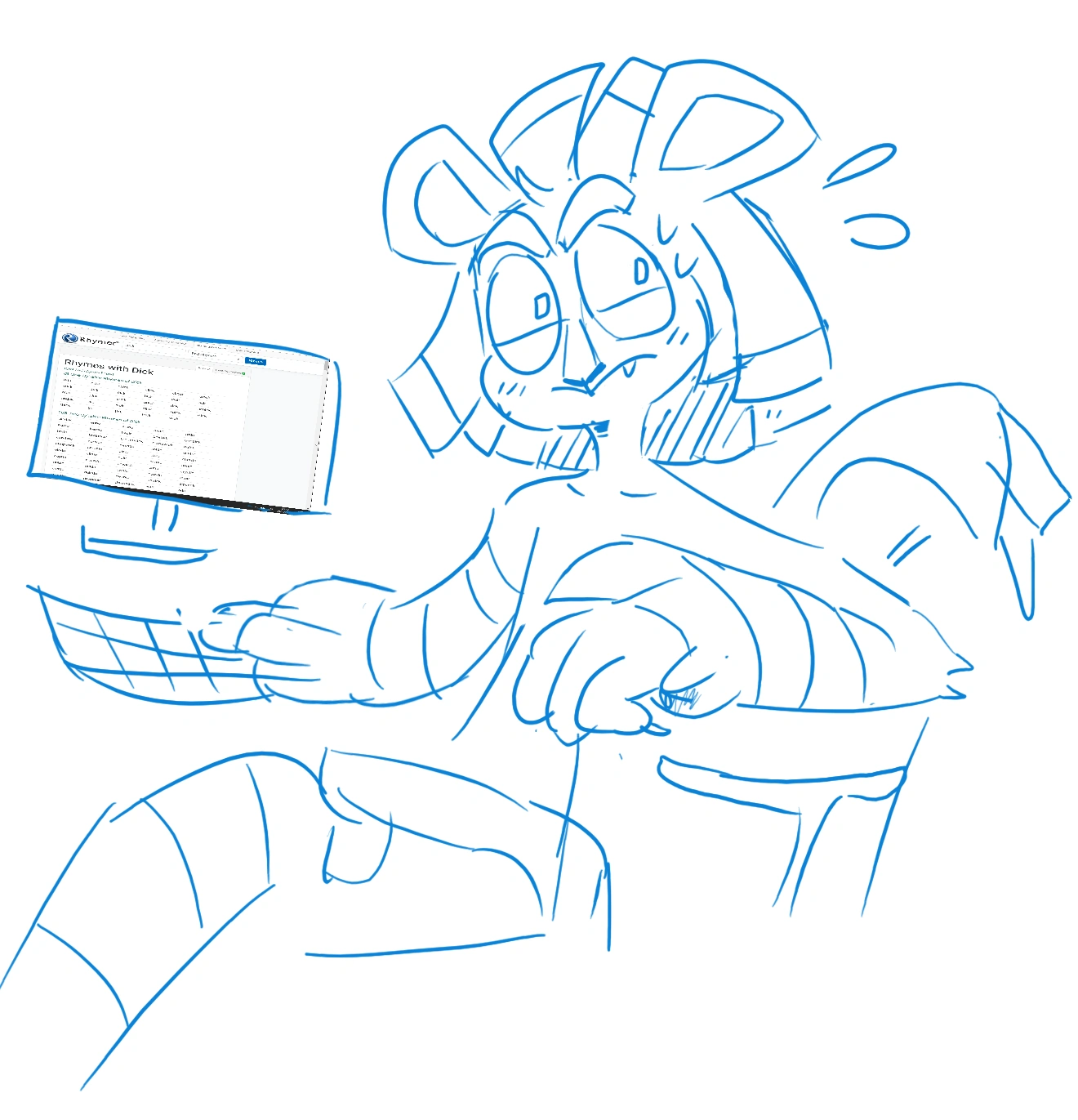
You can tell I'm a mite sesquipedalian. It's a stylistic preference, and my preference is that biege prose sucks. This comes as a result of the Modernist literary movement, which has been more disastrous to the Western canon than NaNoWriMo and /r/writing combined. Broadly speaking, Modernism is the idea that traditional forms of creation, which are based on centuries of expertise and polymathic study, are actually bullshit and should be thrown out in favour of chicken scratch and collective delusion. (You can tell I'm a bit of a Stuckist.)
The movement isn't universally bad, not by any means, but there is an air of desperation about it. Who needs to wield the entirety of language, manipulating its faculties to bring forth beauty? Why should we aspire to the greatness of the old gods, when we can settle in a circlejerk of human mediocrity? What's the point of becoming proficient in the most magical medium, one based on the mystic manipulation of the dreams and desires of all mankind, when we can denigrate ourselves to the level of tabloid goons and penis pill adverts? Just write less, bro. Fuck adjectives and shit. Adverbs? Hardly know 'er. Simple as.
Let's attack one of the codifiers of crappy prose, because he's dead and can't fight back. Ernest Hemingway was a terrible writer. His works would be rejected from FiMFiction on the basis that they aren't novels. They are conversations between people who are terminally bored from being surrounded by blank voids of whitespace. They have less substance than a MST3K-Style Riff on AO3, the bathroom graffiti of literary genres. He had the worst influence of any writer that wasn't a genocidal maniac, and didn't even have the James Joyce excuse of being really old and really sick of his talents. I realize I have made comparisons to Hemingway three articles in a row, but there are times when the Rick and Morty blowjob joke will not do.
Of course, the ass-shite of chickenshit minimalism is still better than the piss-drinking of embarrassingly indulgent Starbucks hipsters who unironically call themselves "wordsmiths," I say wearing a Virginia Woolfe wifebeater. The type of people who write "generate autonomously secreted neuroendocrine signalling molecules consistent with voluntary emittance of concentrated venereal accumulation" should be taken out back and shot.
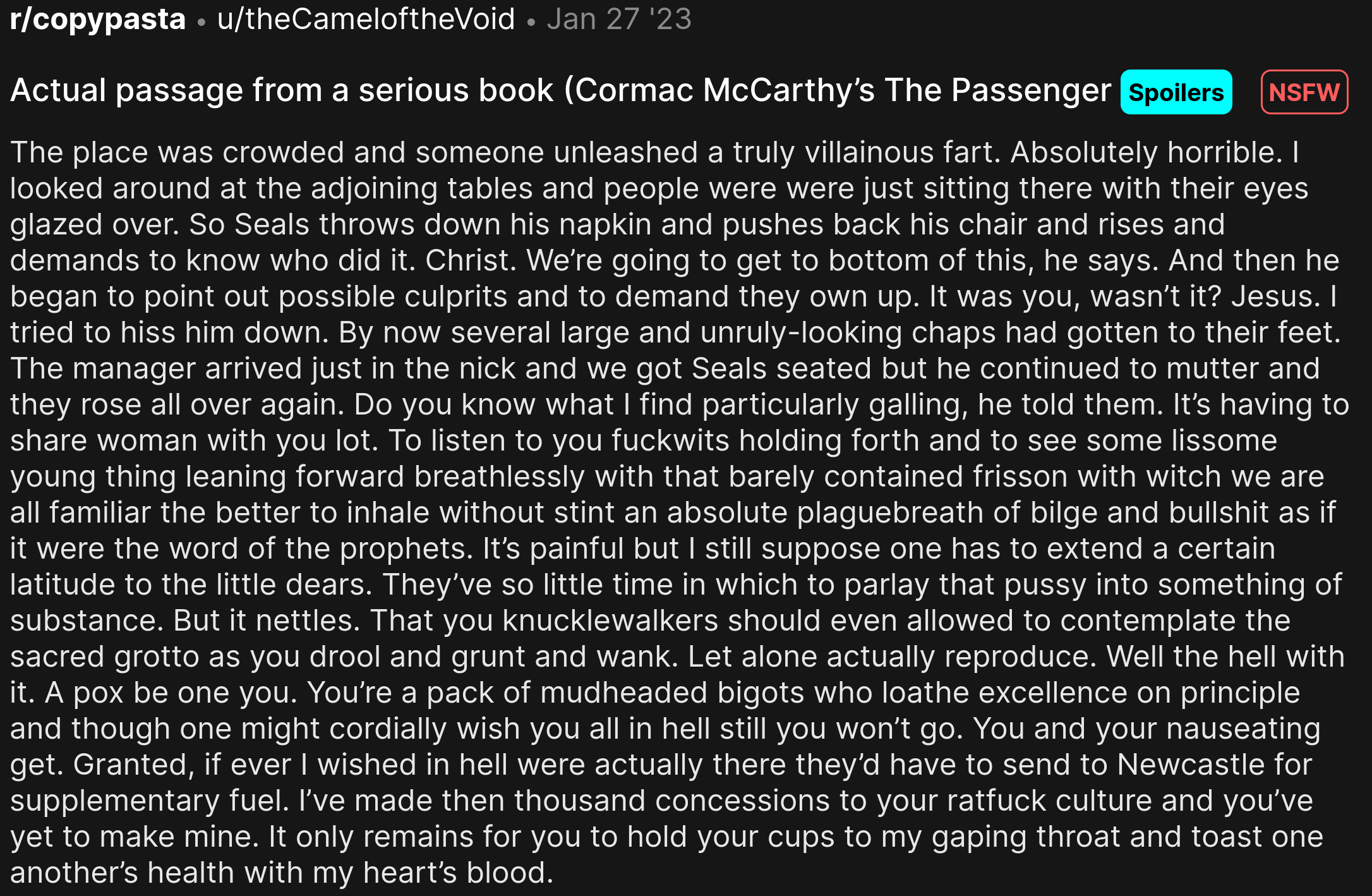
Look, purple prose done well is a thing to behold. It is the work of a master to be up their own ass, tell you that they're up their own ass, and then invite you into their own ass, because their own ass is better than anything else on the planet. It can transport the reader from the soylent syrup of syntax into an alchemist's brew of abstraction and unreality. It immerses like nothing else. And so long as we have the privilege to cut open our throats and pour them into rags of pages and pixels, why not make use of our bloodright, and write some words worth reading?
I won't even talk about the postmodernists, who treat the physical pages of a book as a work of art in itself, leading to a House of Leaves-esque deconstruction of the genre which extends beyond the boundaries of the medium, I explain to a vaping metrosexual. I'll let my favourite writing book, "How Not to Write a Novel," explain why this happens: "Because, every year, someone gets away with it. That person gets scads of extra credit because it is really really hard to do well. Everybody says how smart they are through teeth gritted with envy, which is second only to boatloads of money as the novelist’s greatest reward."
What's the balance? In my view, prose should neither be too ornate nor too sparse, decorated to the degree that it brings forth the point you wish to impart upon the reader, yet never to reveal the smug self-satisfaction of the author's cleverness, deigning to make the purple ink bleed forth, absent the author's blood. And also, like, not boring.
The hallmarks of my prosaic style are this. Don't repeat without reason. Infect your words with rhythm and rhyme. Drench your words in deadpan snark, and abuse irony with a passion. Act stupid if it's funny, but keep your head on your neck. All comedy comes from contrast, and if you can't swing it as a humourist, don't play outside your position. Describe action in ornamental detail, because action has more weight than words. Make use of that word-hoard - it's what it's there for. Flex those italics, too. And for god's sake, don't take yourself so seriously. They're just words; they can't hurt you. Only lead to a lifetime of trauma.
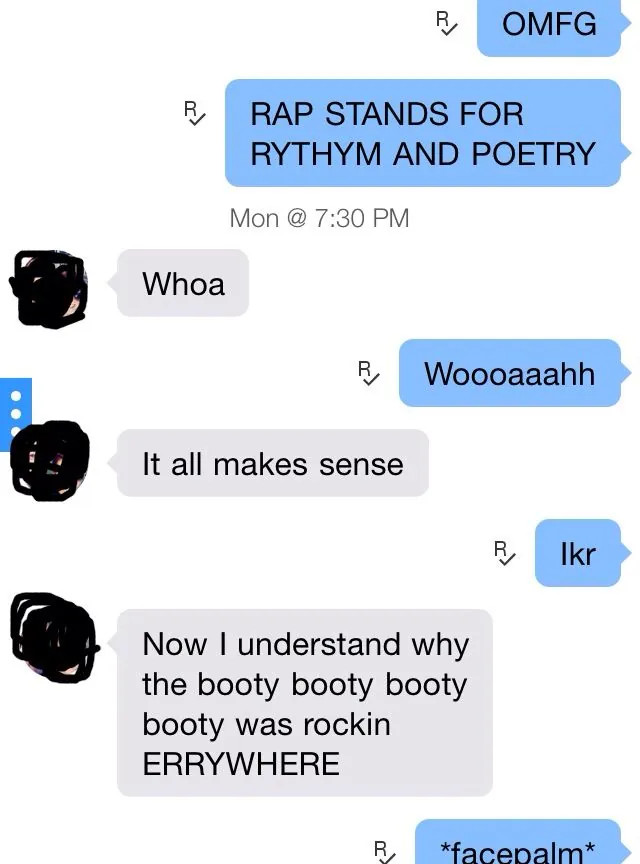
The ironic thing about all this? I mostly write non-fiction. When I do write fiction, I write either from first-person, or third-person limited, often with narrative influence from the characters in the work. This means that much of my advice doesn't apply, as writing those characters means that you have to manipulate your words such that they come out of different people. Two people do not talk the same - neither do two furry androids. And, further, they never talk as people do in real life - no stutters or backtracking, and certainly never beholden to the plot. Dialogue is the toughest to write, because you have to be realer than reality.
But that doesn't mean you have to throw out your preferred prose. Aleph is a good example - verbose, pretentious, insecure, awkward, a sarcastic joker, and ultimately a big soft baby if you bother to get to know them. Nepenthe is different. She's not stupid, but she doesn't need to prove herself with big words. Her speech is shorter, less formal, more natural, more comforting and empathetic rather than declarative. You see the first-person narration of Aleph, and then you see Nepenthe's written logs? It's night and day. Easy trick to seeing if your dialogue makes sense: imagine one character's words in the voice of another. Does it work? No? Then go back and rewrite that shizz.
My advice to writers who can't write? Copy. Copy until you can do better. Steal everything. Steal words, steal pacing, steal rhymes and intonation. Steal the good jokes and absurd routines and the trademarks of those you like. Pillage everything you can get your grubby little hands on, appropriate them for your own perverted purposes, and shove them into your works without shame or sublimation. Because when you're at the tail end of a long and storied career of tomes filled with stories, long, you will recant your adolescent impulses for original ideas, knowing that nothing in this world is created, but diverted, and that you can wield the wisdom of the ancients with a smile and a simple adage: steal this book. Chances are, they stole it, too.
Also, I stole the title, "There Is Love In Me," from a microhouse album by an artist named Four Tet, called "There Is Love In You." It is a holy album, based on heartbeats and subtle touch, and is the auditory background I imagine when writing my robotic romance. I like to believe the musical culture of Taigasaurs would be a similar mix of organic and electronic, from the ambiance of Brian Eno and Boards of Canada, to the wobblers of Jon Hopkins and Daft Punk. But that's just self-indulgent fluff. Surely, I would never make a sequel elucidating these thoughts.
Gay Fetishes

The final part of writing a gay porno story is having some gay porno. Otherwise it would just be a story, and nobody likes reading those. When it comes to pornography, there's a saying in the business: there's no such thing as halfway sleazy. If you're an independent producer, a niche within a niche, then you have full reign to have as much self-indulgence as your horny little adolescent mind could ever desire.
As the game was created for Strawberry Jam 8, an erotic game jam, it was based around eros from the beginning. The jam encourages people to fall outside mainstream conceptions of kink, having people express their fetishes as honestly as they can, whether or not they are "pornographic." One of the lessons of the jam is that you don't have to be full frontal to be erotic. In fact, there is a category called "stealth," which encourages developers to be more subtle in their perversions. As a lifelong apprentice of the degenerate arts, I have some expertise in these matters, and am more than willing to show off my bare ass to strangers on the internet for the purposes of masturbatory bliss.
The structure of the novel, if I had the time to complete it, would have been this. A preliminary meetup to discuss the sex, a fetishistic computerphile chapter that isn't explicitly sexual, a more sexual foreplay scene with plushies and dirty talk, an incredibly erotic bath scene where our characters find lots of squishy comfort in each other's bodies, and finally a closing chapter making bare the awkardness and desperation of Aleph and Nepenthe - all interspersed with character interpretations in the form of document logs. Unfortunately, I didn't have the luxury of implementing the bath scene, meaning I had to make a blatant [REDACTED] cop-out. I hand-waved this, and you could interpret that the sex wasn't really the point, more so that it happened at all. But come on. I want my enby pussy.
I had a review on There Is Love In Me, saying that it was "very much a work for Computer Touchers." This is an excellent compliment and is exactly the type of fetishism I wished to impart. The luscious descriptions of technology are as much of a kink as the plushophilia, BDSM-adjacency, and the not-siblings friends-with-benefits thing. The tech descriptions are objectum as heck, and though I did not go too much into machine empathy for the sake of the narrative, there is an undercurrent of Aleph's willingness fuck the shit out of their retro 'puters - even if Nepenthe is a bit of a baby gay, in the matters of techtum.

But the explicit sexual elements come in how they're implemented. It's easy to imagine that Taigasaurs, as repressed as they are, would make ample use of toys and porn to help themselves come to terms. In the case of the characters, the toys aren't a euphanism - they're just plushies. Plushophilia is one of my favourite fetishes, and I'm fortunate I could implement it in a thematically sensible, basement-dweller manner. Both Aleph and Nepenthe are quite obviously attached to their plushies, and it is implied, with the large variety of species on display, that they are quite popular in Taigasaur culture.
Before we get to that point, we see a chapter where Aleph tries to get Nepenthe to segfault them on purpose. I imagine this is a form of somnophilic masochism for Taigasaurs, something absurd on the face of it, yet pleasurable nonetheless. This is accomplished through BDSM principles, including a discussion of "safe, sane, consensual," or even "personally responsible in consensual kink." Aleph wires themself up through a daisy chain of computer parts, which Nepenthe is supposed to interface through, in order to perform this dangerous task in a reasonably secure manner. It doesn't work out, but that's not the point. The point is that they care.
Discussions of consent and responsibility are especially important to me in my own fetishism, and I always want to bring that through in my work. Sex is not an obligation, and sometimes it takes a lot of work. Having that comfort and empathy for your partner is the biggest lesson I want to impart, even if things don't go the way you initially planned. If I had additional time I would write out a second chapter where the segfaulting goes well to show Nepenthe's character growth and how her relationship with Aleph evolves, but with such a short budget, I could only put this scene in once.

The plushophilia chapter was my most obviously self-indulgent one. It was long on purpose, a deliberate demonstration of both the silliness and meandering nature of sex, especially among two switchy subs who can only sometimes dominate the other. While it is under one chapter, it is broadly split up into foreplay and play-play, with lots of stimulation for Aleph along the way. Aleph is obviously autistic, so being massaged and cared for by a doting friend is more than enough for them to feel loved. That includes things like cuddles, scent play, personal affirmations, and being surrounded by lots and lots of fluffy butts. The most blatantly sexual thing is the two playing with each other's teats, another implication to their anatomical nature. This was included as a nod to their canine inspiration and the inaccurate "Taigasaur" nomenclature. And also because I fucking love teats.
What would have been the bath scene is not literal bathing, as we know it. It is stated that Aleph hates bathing, and fridge logic dictates it's absurd for robots to deliberately soak themselves in water. (Additional fridge logic suggests that artificial weapons, who can't survive in rain, would make for crappy materiel.) However, it is also shown that they can drink alcohol in massive quantities, consume organic foods, and make use of toilets, meaning that they have to be waterproofed. And also that I stole ideas from Futurama.
The solution came in the form of the ash baths - a public space, inspired by Roman baths, where Taigasaurs go to clean themselves out in the manner of computers. They coat themselves with cleansing ash, and then blast all the dust out of them, taking place in a chilly, dry, and windless environment. They bring "ash bags" with them, containing the tools they need to remove their artificial arms and armour, leaving them naked, exposed, and sometimes limbless. The purpose is to be both practical and social, thus the necessity of Aleph and Nepenthe having to break into the baths at midnight, so they can be alone, and thus fuck their brains out. If this doesn't make sense, just keep in mind the IMAGES principle: "It's Magic. Ain't Gotta Explain Shit."
The final scene, as is essential for all sexual affairs, is aftercare. Kind of. Because it's the conclusion of the narrative, it has to have some sort of dramatic impact. Not necessarily a tragic ending, but certainly not a wholly happy one. I don't write happy endings, don't you know? The endings that give you something to think about, even make you feel a little empty inside, but still come out of it satisfied that it was the right way to end the story... that's what I aspire to conclude with. Not a cheesy dance party ending, or one in which Nepenthe gets pregnant and lives Happily Ever After - although that's also one of my fetishes. No, just an ending where, spoiler alert, the two aren't cured of their lifelong traumas, and they will carry their compulsions with them for as long as they live. But they still truly love each other. And that's what really counts.
EOF
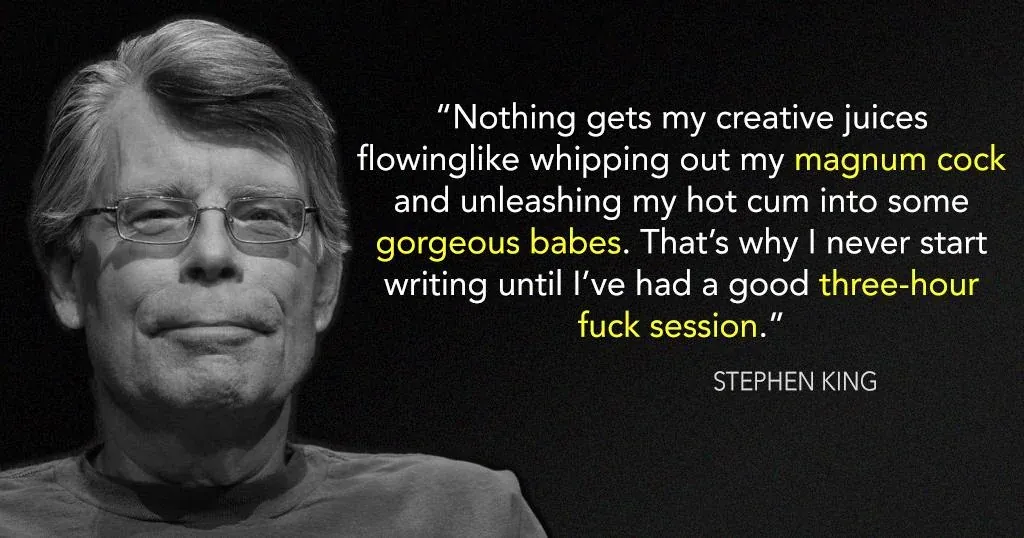
After spending two weeks writing a 9,000 word nerd essay analyzing the philosophy and writing style which created There Is Love In Me, which I will remark is over half of the 17,500 words in the book itself, you must think it's time for a break. Well, no. Because this work is still, technically, a video game. There is a whole 'nother world of ill-informed commentary to go through, and that will be Part 2 of this epic duology. Now that I've succeeded in my ambitions of being a failed writer, I can succeed at being a failed game designer! What's the final refuge for those who can't hack it in the real world? Impotent blogging on a platform exclusively frequented by systematically oppressed minorities. Everything in this world is part of my plan.
If you have read the entirety of this article, and are SUPER excited to see what this furry robot business is about, you can view the game, "There is Love in Me", on my itch.io page! The link is there. Please click. You can call me a good girl, if you want. You can put a little collar and bell on me, place a leash on my neck, making me follow you around as my head bows to your ankles, having to adjust my pace on all fours as my master brings me around in public with a short skirt and stockings, exposing all my barest parts to total strangers, with my butt wagging all over the place, waiting to get home to play with even more loving strangers, finally earning my special puppy reward!
See you next week.

Disposable Arts by Disposable Dev is licensed under CC BY-SA 4.0